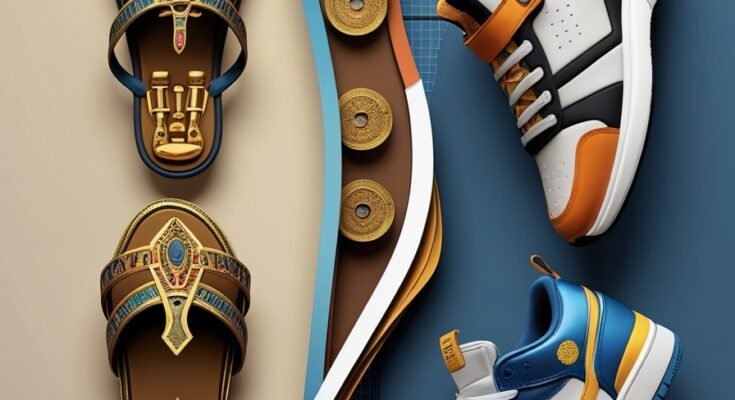Shoes: A Timeless Tale of Function and Fashion
From the earliest days of human civilization, shoes have been more than mere foot coverings—they are artifacts of culture, innovation, and identity. This article traces the evolution of footwear, exploring its historical roots, diverse styles, and the technological advancements that continue to redefine how we walk, work, and express ourselves.
A Stroll Through History
The story of shoes begins over 10,000 years ago with simple sandals crafted from animal hides and plant fibers. Ancient civilizations like Egypt and Rome elevated footwear into symbols of power and prestige. Egyptian pharaohs wore gold-adorned sandals, while Roman elites showcased intricately tooled leather designs. By the Middle Ages, shoes became markers of social class: exaggerated pointed toes in Europe signaled wealth, and Renaissance Italy introduced heels for both men and women, blending practicality with opulence.
The Industrial Revolution democratized footwear, turning handmade luxury into mass-produced necessity. The 20th century saw iconic designs emerge—Converse’s canvas sneakers in 1917, Dr. Martens’ rugged boots in the 1960s, and Nike’s Air Jordans in 1984. Today, shoes span biodegradable eco-kicks to AI-engineered athletic gear, proving that innovation never stops.
Types of Shoes: Style Meets Purpose
Casual Footwear: Sneakers, loafers, and slip-ons dominate everyday wear, prioritizing comfort with lightweight materials like canvas and breathable mesh. Their versatility makes them a wardrobe staple for urban life and weekend adventures.
Formal Elegance: Oxfords, brogues, and stilettos embody sophistication. Crafted from premium leather or suede, these designs blend tradition with modern tailoring, perfect for boardrooms, weddings, or red carpets.
Athletic Performance: Running shoes, hiking boots, and cycling cleats are engineered for precision. Features like shock-absorbing soles, moisture-wicking fabrics, and carbon-fiber plates enhance speed, endurance, and safety.
Specialized Gear: Weather-resistant boots, climbing shoes, and orthopedic inserts address niche needs. Waterproof membranes, grippy outsoles, and ergonomic designs tackle everything from mountain trails to medical recovery.
Materials and Innovation
Traditional materials like full-grain leather and hand-stitched soles remain timeless for their durability and comfort. Modern advancements, however, are revolutionizing the industry:
- Sustainable Alternatives: Mushroom leather, recycled plastics, and plant-based dyes reduce environmental impact.
- Tech-Driven Design: 3D printing creates custom-fit midsoles, while smart shoes with embedded sensors track gait and posture in real time.
- Performance Enhancements: Aerogel insulation for extreme cold, self-lacing systems, and energy-return foams push the boundaries of functionality.
Shoes as Cultural Icons
Footwear has always been a canvas for self-expression. The 1980s hip-hop scene turned sneakers into status symbols, while Vivienne Westwood’s platform heels redefined punk fashion. Collaborations between brands like Louis Vuitton and Supreme or Balenciaga’s chunky “Triple S” sneakers blur the lines between streetwear and high fashion. Even historic moments are tied to shoes—Neil Armstrong’s lunar boots and Carrie Bradshaw’s Manolo Blahniks are etched into pop culture lore.
The Future of Footwear
As sustainability and technology collide, the next era of shoes promises radical change. Lab-grown materials, zero-waste manufacturing, and circular design models aim to shrink the industry’s carbon footprint. Meanwhile, AI-generated designs and augmented reality fitting rooms could personalize shopping experiences like never before.


